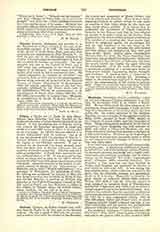

Ciccione, ANDREA, an Italian sculptor and architect, born in Naples in the first part of the fifteenth century. He was a pupil of Masuccio the younger, and is said to have built the cloister of San Severino, the church and monastery of Monte Oliveto, and several palaces and churches. There is some doubt regarding Ciccione, as certain writers of note make no mention of him, while others do who have not been found always reliable. It is known that he sculptured the monument of Giosue Caracciolo, formerly in the Duomo, and that he was selected by Joanna II to make a tomb for her brother, King Ladislaus, in the church of San Giovanni a Carbonara. This consists of a towering pile, three stories high, flanked by allegorical figures, the sarcophagus half way up, and Ladislaus on his war horse on the summit. The eyes are colored, the robe borders and hair gilded, and backgrounds blue with gold fleurs-de-lys. Queen Joanna again commissioned Ciccione when her lover, the Grand Seneschal Gian Caracciolo, was murdered by conspirators. Caracciolo had a chapel in San Giovanni a Carbonara, and there the monks buried him hastily the night following his assassination. Over the tomb Ciccione raised a monument consisting of a sarcophagus borne by three armed knights representing Justice, Strength, and Prudence. A standing figure of Caracciolo on the top was colored to portray life. Attention is called to the polychromy employed in these tombs, and to the representation of the virtues in military garb. There are no certain dates regarding Ciccione.
M. L. HANDLEY

